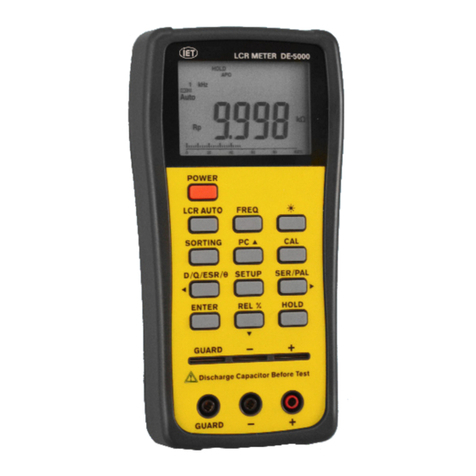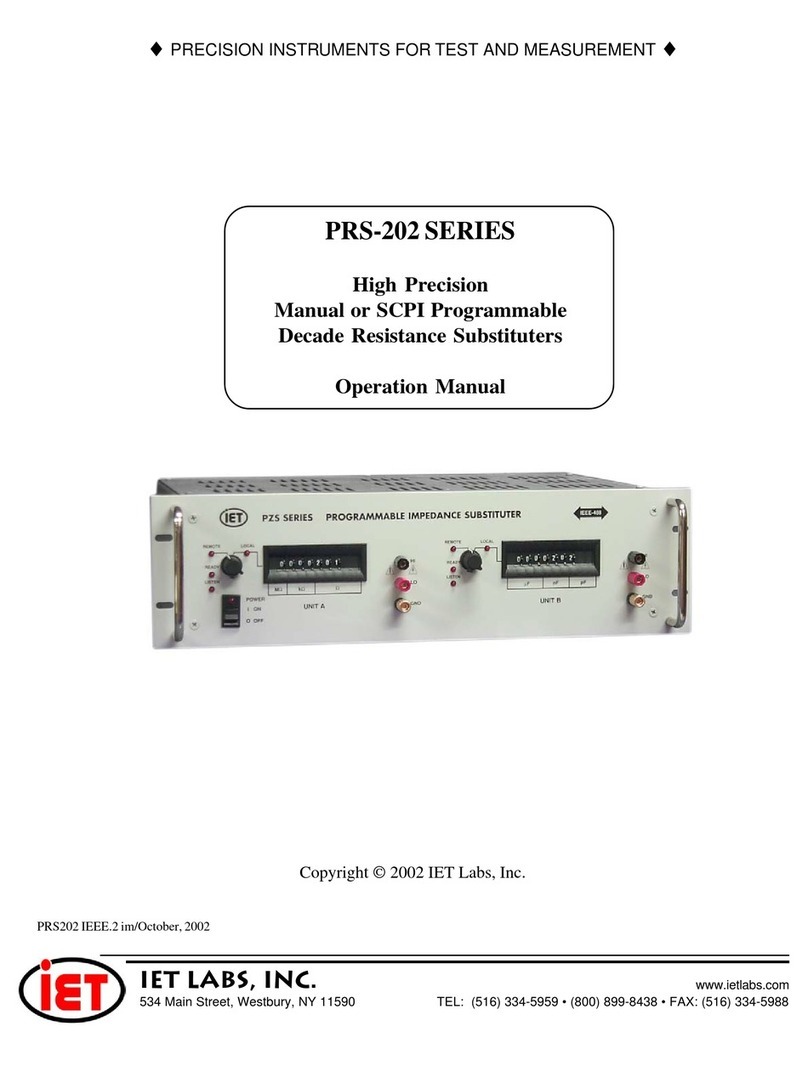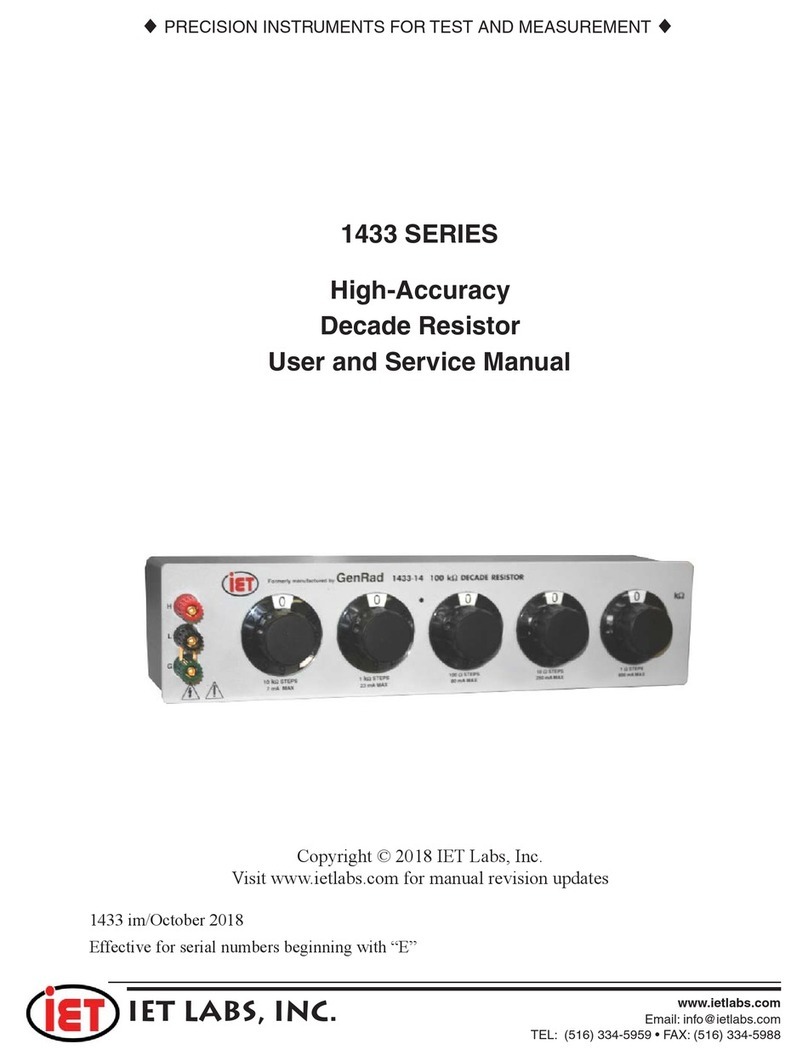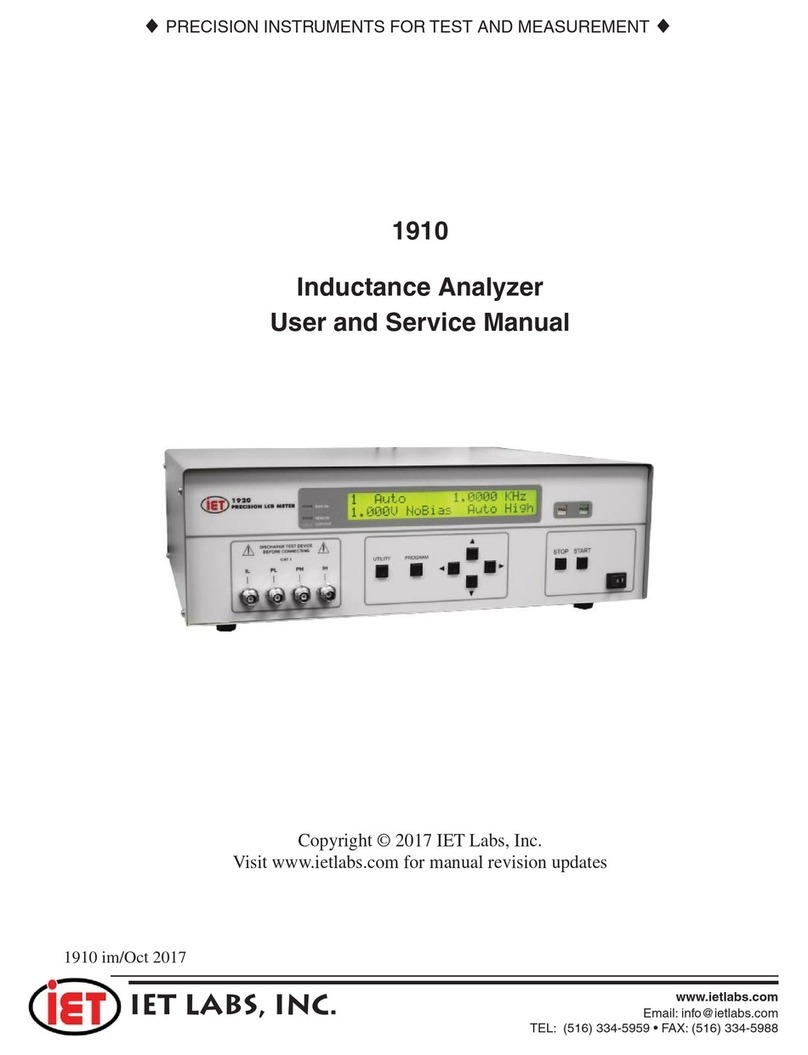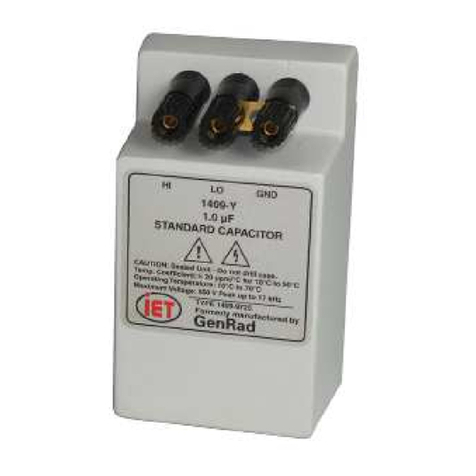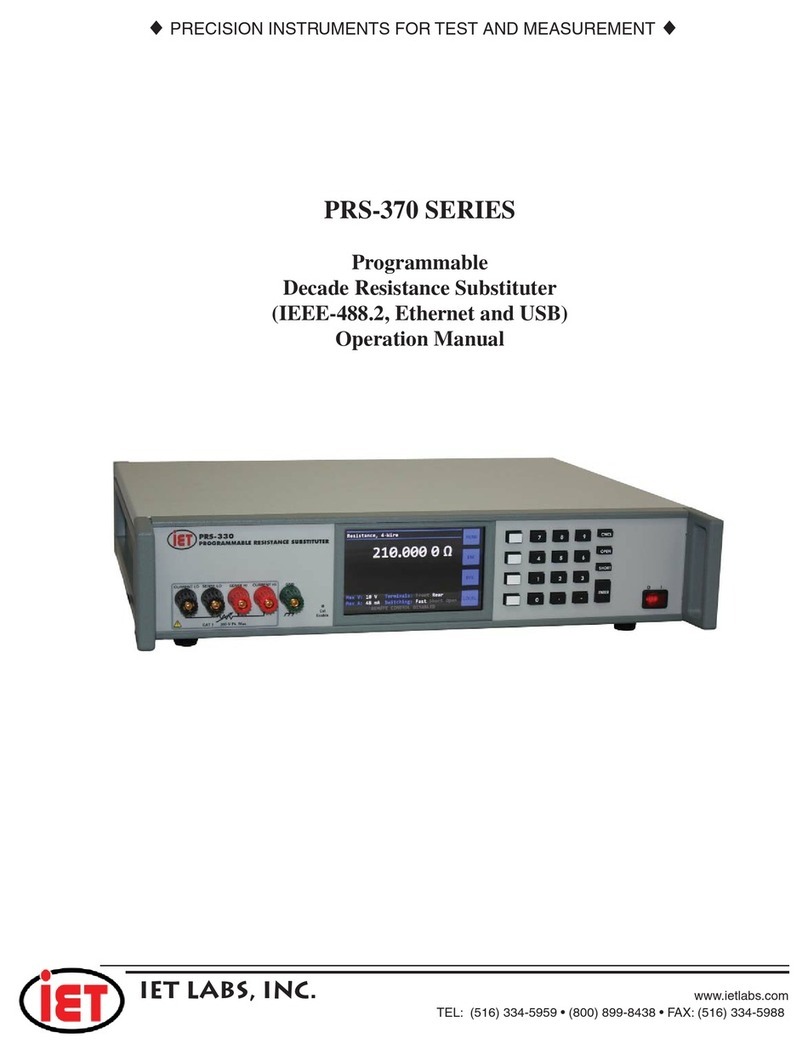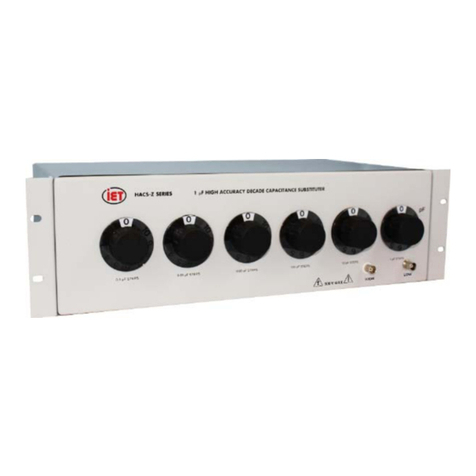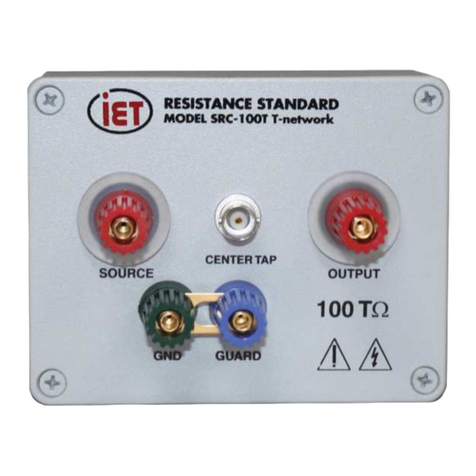
3
Operation
LOM 510A Series
Chapter 3
Operation
4. Select the proper resistance range by pushing
in the appropriate range button. Very often
the correct range can’t be determined in ad-
vance. In such cases start with the highest
range, working down to the lower ranges.
This keeps the stress on the unknown to a
minimum.
3.2 Continuous DC Mode
The Continuous DC Mode is the traditional method
of measuring the value of’a resistor. Aconstant cur-
rent is forced through the unknown and the voltage
developed across the device is measured. This volt-
age is directly proportional to the resistance of the
device. Unfortunately, this methoddoesn’t cancel one
important source of error, small voltage sources in
series with the measured resistance. These voltage
sources are mainly due to thermocouple effects and
unlesstheyarecarefullynulledoutwiththefrontpanel
zero control they can seriously degrade the accuracy
of the measurement. When attaching the test leads to
the unknown try not to warm the contact area with
your fingers.
The Continuous DC Mode is the proper mode only
when measuring highly inductive components such
as transformers, chokes and motor windings. Wire
wound resistors are not inductive enough to require
measurement in this mode.
3.3 Switched DC Mode
The Switched DC Mode first measures the voltage
acrosstheunknownwiththedrivecurrentoff. Itstores
thisvoltage and then measuresthevoltage with a cali-
3.1 General Operating Instructions.
1. Plug the power cord into the rear panel AC
connector and the test leads into the connec-
tor provided on the front panel.
2. Push the power switch in to turn the Model
510A on and wait 30 minutes to allow the
instrument to stabilize. If the test leads are
left open circuited or the resistance of the
unknownexceeds maximum value forthese-
lectedrange, the display willflash. Thisdoes
no harm to the instrument.
3. Select the proper measurement drive mode.
The Continuous and Switched DC drive
modes are selected by the front panel mode
select switch. The Pulsed Mode is selected
through the rear panel I/O connector. Refer
to the next section to determine which mode
is beat for a particular measurement task.
If the Continuous DC Mode is selected then the
front panel zero control should be adjusted
periodicallyto assure thatatruezero is main-
tained. Zeroing the meter is beat done on the
highest (200 ohms full scale) range since a
trueshort circuit can be difficult to attainwith
Kelvintypeclipson the more sensitive ranges.
(Almost any chunk of metal has at least a
micro-ohm of resistance.). Connect the test
clips to a heavy, short piece of wire and care-
fully zero the display.
Push the “DRY CKT” button in if the open cir-
cuit voltage is to be clamped to 50 millivolts
maximum. (20 millivolts maximum on the
Model 510A/20MV)

